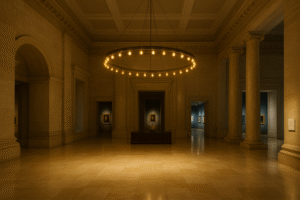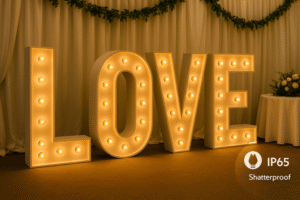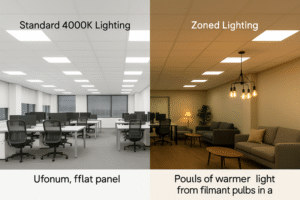You need to light priceless artifacts, but traditional lights produce damaging heat and UV rays. This degradation is irreversible, forcing you to compromise between visibility and preservation, a constant worry for curators.
LED technology provides precise, cool illumination without harmful UV radiation. With superior color rendering and control, LEDs allow you to showcase artwork in its true colors while ensuring its long-term preservation in museums and galleries.
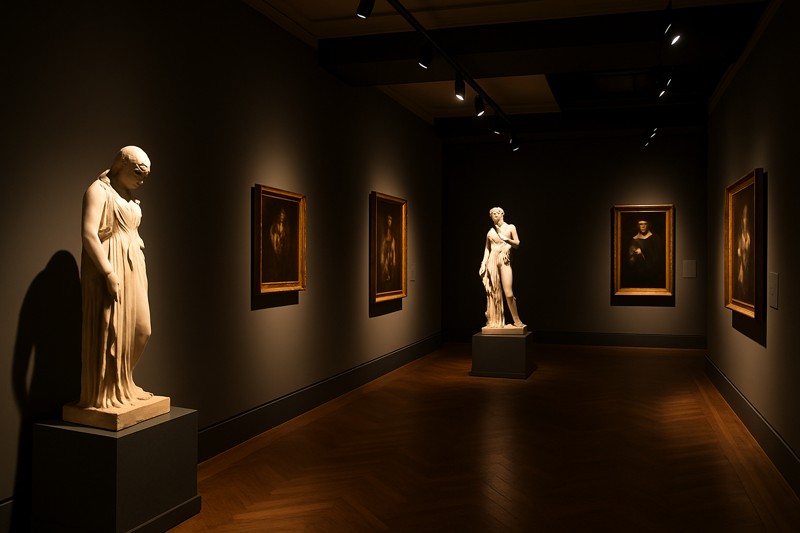
As a manufacturer of high-quality LED bulbs, I'm fascinated by extreme use cases for our technology. A museum is one of the most demanding environments imaginable. It's a space where a slight color inaccuracy can change the entire meaning of a painting and where the wrong kind of light can slowly destroy the very thing you're trying to display. While we produce many decorative bulbs, the core principles of our best products—high color accuracy, long lifespans, and precise control—are the exact same requirements curators have for their most sensitive exhibitions. Getting lighting right in a gallery is a science, and it’s a perfect case study in the power of precision LEDs.
Why is High Color Rendering Non-Negotiable for Artwork?
Are you concerned that your exhibits look dull or that colors appear distorted under the current lighting? Inaccurate color can misrepresent an artist's intention and fail to engage your visitors properly.
High Color Rendering Index (CRI) is essential for viewing art. LEDs with a CRI of over 80 ensure that the colors of paintings and artifacts appear natural and vibrant, exactly as the artist intended them to be seen.
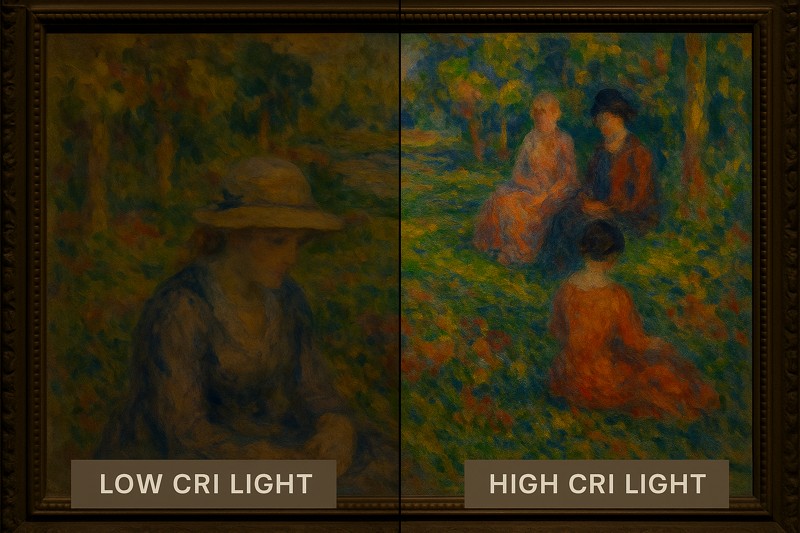
The single most important job of a museum light is to show the truth. The subtle difference between a crimson and a scarlet, or a cobalt and an ultramarine, is everything in a masterpiece. This is where the Color Rendering Index, or CRI, becomes the hero. CRI is a scale from 0 to 100 that measures how accurately a light source reveals the true colors of an object. For general use, a CRI of 80 is good, but for a gallery, the higher, the better. All our premium bulbs are designed with a CRI of over 80 to meet these high standards. Using a low CRI light on a Rembrandt would be a tragedy; the deep, rich browns and golds would appear flat and muddy. A high CRI LED renders these colors with fidelity, allowing the viewer to appreciate the full depth and emotional impact of the work. It ensures that every brushstroke and every pigment is seen with clarity and accuracy, preserving the artist's original vision.
Key Factors in Faithful Color Representation
| Lighting Metric | Importance in a Museum Context | Impact on Viewer Experience |
|---|---|---|
| CRI > 801 | Renders the colors of artifacts and paintings accurately. | Visitors see the artwork in its true, intended colors, enhancing appreciation. |
| Color Consistency2 | Ensures all lights in a gallery have the exact same color output. | Prevents distracting "patchwork" lighting, creating a seamless and professional look. |
| Spectrum Quality | A full spectral output without peaks or valleys in certain colors. | Avoids distortion of specific hues, ensuring balanced and natural color appearance. |
How Can You Control Light to Protect Sensitive Artwork?
Are you constantly balancing the need for visitors to see the artwork with the risk of light-induced damage? Fading pigments and deteriorating fabrics are a curator's nightmare, caused by excessive light exposure.
LEDs offer unparalleled control over light intensity through dimming capabilities, and they produce virtually no UV or IR radiation. This allows for precise illumination levels that protect sensitive artifacts from degradation while ensuring excellent visibility.
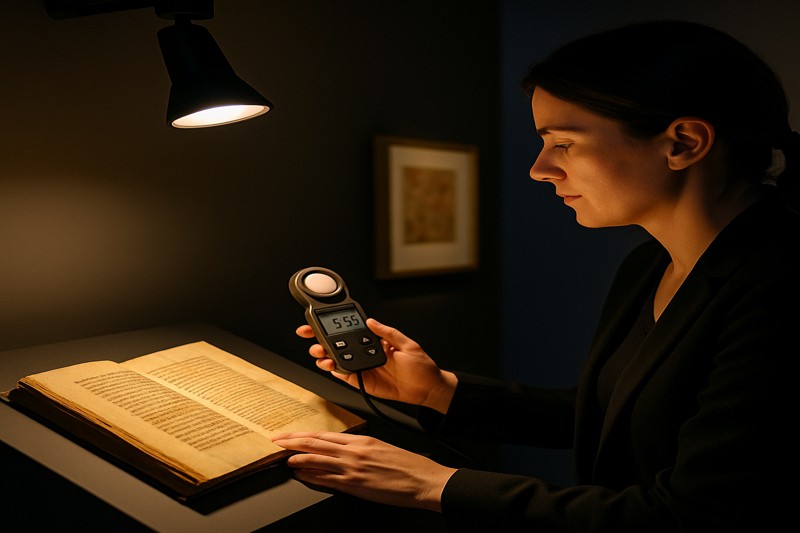
Preservation is the core mission of any museum. For centuries, this meant keeping sensitive items, like textiles or manuscripts, in near darkness. Light, especially the kind from old incandescent and fluorescent bulbs, is a destructive force. It carries two invisible dangers: Ultraviolet (UV) radiation, which breaks down chemical bonds in pigments, and Infrared (IR) radiation, which is essentially heat that dries out and damages organic materials. LEDs are a game-changer because they produce a "cold" light with minimal UV or IR. This is the first layer of protection. The second is control. The ability to precisely set the amount of light is crucial. Many of our bulbs are "dimbaar" (dimmable), a feature that in a museum context is not for mood, but for science. A curator can use a light meter to ensure a delicate watercolor is exposed to exactly 50 lux, no more, while a durable stone sculpture can be safely lit to 300 lux. Furthermore, our LEDs have lifespans of 20,000 hours or more, meaning exhibits aren't disturbed for frequent bulb changes, further protecting the artifacts.
Layers of Protection with LED Lighting
- No UV/IR Radiation3: Unlike older technologies, LEDs emit focused, visible light without the damaging invisible wavelengths, fundamentally reducing the risk of fading and material decay.
- Precise Dimming: Allows light levels to be tailored to the specific conservation requirements of each object, from robust metalwork to fragile paper.
- Long Lifespan4: Reduces the frequency of maintenance, minimizing the physical handling and environmental changes around sensitive exhibits.
Can You Shape Light to Guide the Viewer's Eye?
Does your gallery lighting feel flat and uniform? When everything is lit equally, nothing stands out, and you lose the opportunity to create focus, drama, and a compelling journey for your visitors.
Yes, the flexibility of LED fixtures allows you to shape and direct light with great precision. Using adjustable diffusers and different beam angles, you can create focused highlights that draw attention to key artworks and build a visual narrative.
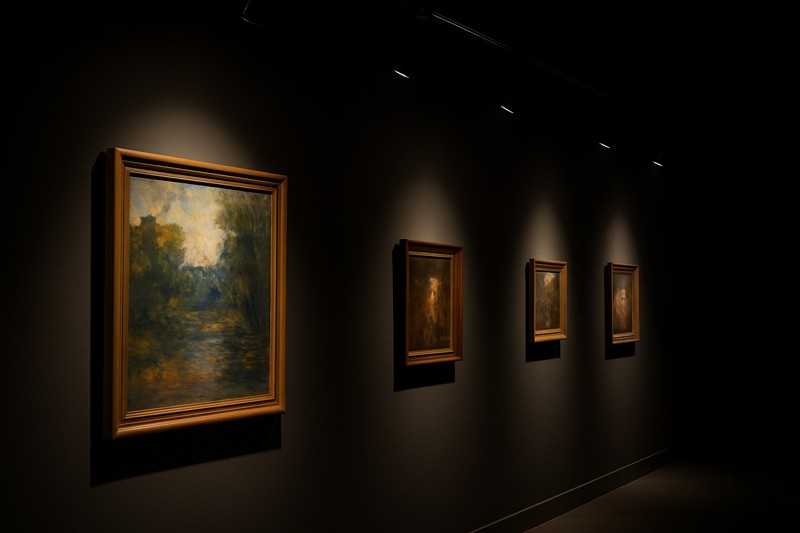
A great exhibition is a form of storytelling, and light is the narrator. It tells the visitor where to look and what is important. Uniform, flat lighting is like a monotonous voice; it puts the audience to sleep. The goal is to create a visual hierarchy. This is achieved by "painting with light and shadow." Modern LED fixtures give us the tools to do this with incredible precision. Some fixtures, for example, come with a "diffusore direzionabile," or an adjustable diffuser, which lets you aim and shape the beam of light exactly where you need it. You can use a very narrow beam to create a dramatic highlight on a small sculpture, making it the focal point of the room. A wider, softer beam can wash a larger painting, ensuring it's evenly lit from corner to corner. By creating contrast—making the artwork brilliant against a subtly dimmer background—you guide the viewer's eye from one piece to the next. This deliberate control transforms a simple room of objects into a curated, emotional experience.
Techniques for Directing Focus
| Technique | Description | Desired Effect |
|---|---|---|
| Accent Lighting5 | Using a focused beam of light (a spotlight) that is significantly brighter than the ambient light. | Makes the artwork the clear center of attention and adds a sense of drama. |
| Wall Grazing | Placing a light source close to a textured surface to cast long shadows. | Emphasizes the texture of a sculpture or the impasto brushwork on a painting. |
| Framing6 | Usingmultiple adjustable spotlights to "frame" a piece with light, keeping spill light off the surrounding wall. | Creates a clean, gallery-quality presentation that isolates and elevates the artwork. |
How Does Light Temperature Create the Right Atmosphere?
Does the atmosphere in your gallery feel wrong for the collection? A cold, clinical light can make a collection of warm, classical paintings feel sterile, while overly warm light can make modern art look dated.
The color temperature (CCT) of an LED is crucial for setting the atmosphere. A warm white (3000K) can create an intimate setting for classical art, while a neutral white (4000K) provides a clean, crisp feel for modern or contemporary exhibitions.
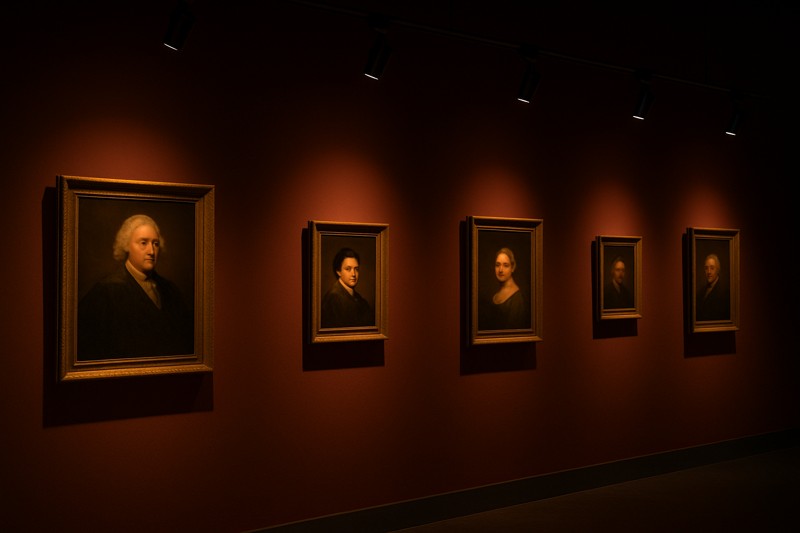
Beyond accuracy and preservation, light is the primary tool for creating mood. The color temperature of the light source, measured in Kelvin (K), dictates whether the space feels warm and intimate or cool and modern. This choice should be deliberate and support the art itself. For a gallery displaying Old Masters, whose canvases are rich with warm oils and aged varnish, a warm CCT of around 3000K is ideal. It complements the tones in the artwork and creates a classic, comfortable viewing environment. Conversely, for a minimalist gallery showing contemporary sculptures or black-and-white photography, a cooler, more neutral CCT of 4000K is often better. This crisp, white light feels more objective and architectural, allowing the form and lines of the artwork to take center stage without adding a warm color cast. We offer a range of color temperatures in our products, from a very warm 2200K up to a neutral 4000K, giving curators the flexibility to match the lighting perfectly to the collection.
Matching CCT to the Collection
| Color Temperature7 | Atmosphere Created | Best Suited For8 |
|---|---|---|
| 2700K - 3000K | Warm, inviting, intimate, classic. | Classical and Renaissance art, historical artifacts, collections with warm color palettes. |
| 3500K | Neutral, balanced, pleasant. | General-purpose galleries, mixed-era collections, spaces that need to feel professional but not sterile. |
| 4000K | Crisp, clean, modern, alert. | Contemporary and modern art, photography exhibitions, science and technology displays. |
Conclusion
Precision LED lighting empowers museums to both display and protect our shared cultural heritage, ensuring that priceless artworks can be seen in their best light without compromise for generations to come.
Understanding CRI > 80 helps ensure artworks are displayed in their true colors, enhancing visitor appreciation. ↩
Exploring color consistency reveals how it creates a professional look and enhances the viewer's experience. ↩
Explore how No UV/IR Radiation in LED lighting can protect valuable items from damage and decay. ↩
Learn how the Long Lifespan of LED lighting minimizes maintenance and protects sensitive exhibits. ↩
Explore this link to understand how Accent Lighting can transform your space and highlight key features effectively. ↩
Discover the impact of Framing in lighting design and how it can elevate the visual appeal of your art. ↩
Understanding Color Temperature is crucial for creating the right ambiance in various settings. ↩
Exploring this will help you optimize lighting for your art and artifacts, enhancing their presentation. ↩





